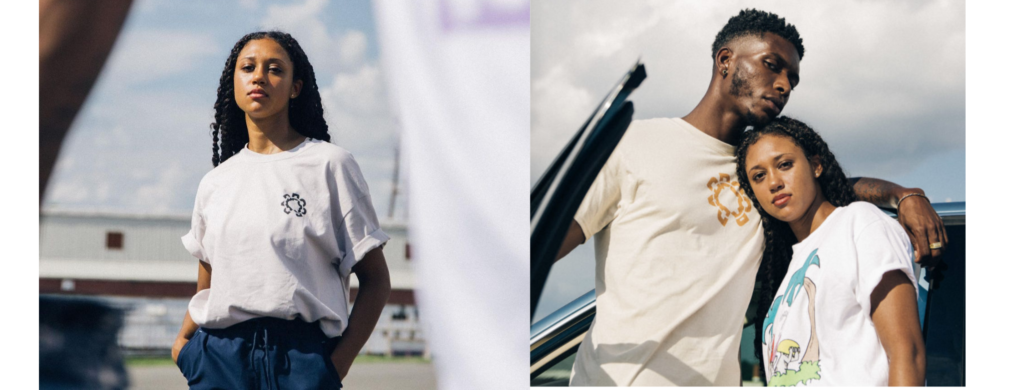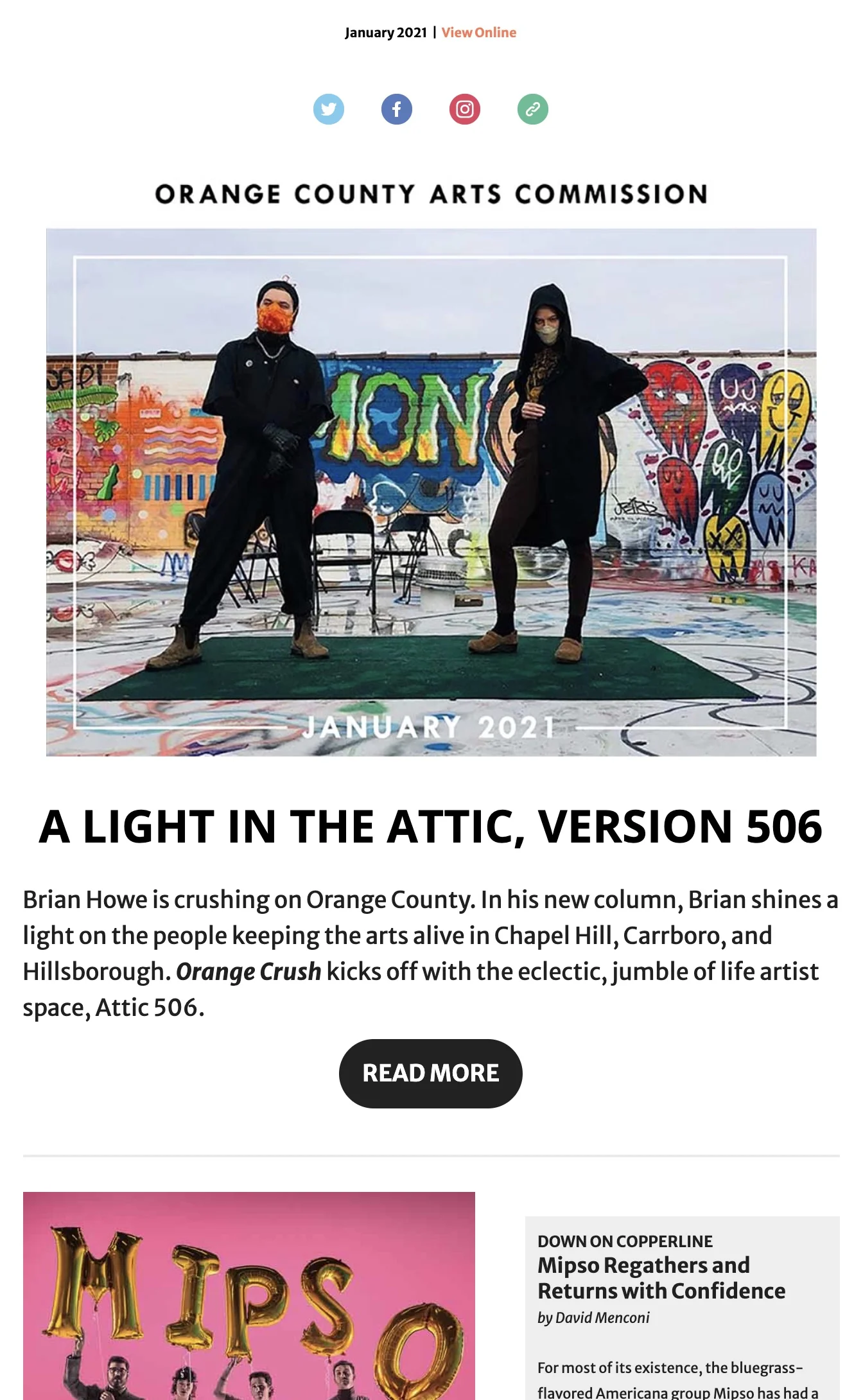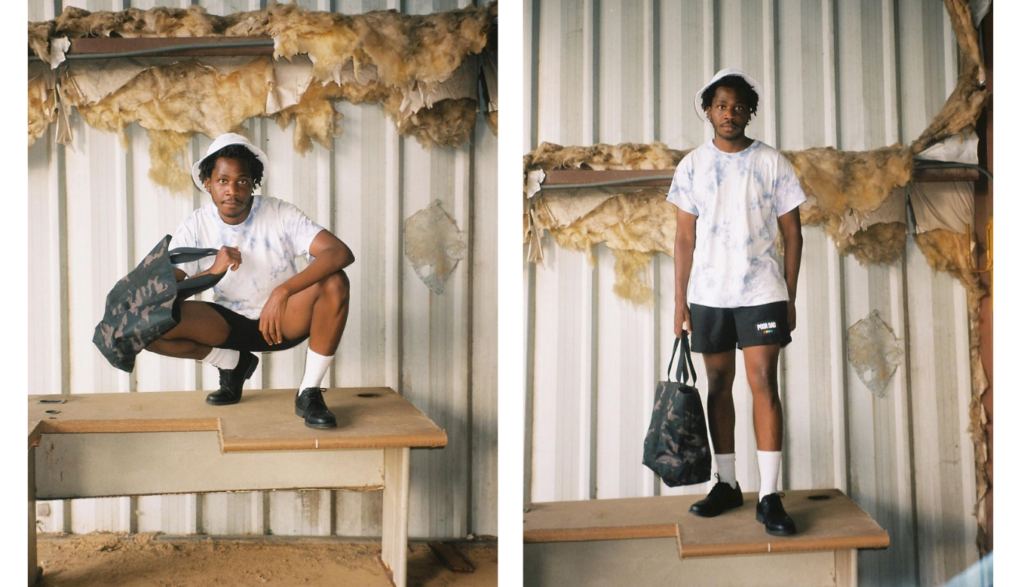
—Article by Emilie Menzel
After talking to the wonderfully abstract thinker and local artist Mike Tambashe, one is pushed to think about design as a genre more broadly: design as a sensibility, as a bringing together of multiple parts, as arrangement. Mike is a talented clothing designer and textile artist. And, he is also a music manager and music label owner, a marketer, a film photographer, a problem solver, a designer, a thoughtful designer. Throughout Mike’s work, there is a thread of—well, he describes it like this: “I love people, I love connecting with people, I love stories, and I can help in that way.”
Let’s back up for a minute. Originally out of high school, Mike went to college for electrical engineering. Mike enjoyed the field’s problem solving focus, but did not see the engineering path as one that quite clicked for him in the long run. “I ended up going to stay with my dad in Zimbabwe,” explains Mike, “and over those six months I started to think about those things that interest me: what am I good at, what do I want to do.” It was at this time, 2008, that Mike began collaborating with his brother and cousin on what would become the music management and music label company Immaculate Taste. Through work with Immaculate Taste, Mike picked up key skills in PR, marketing, production, and management.
Mike notes that an important element in this story is that he and his family were building music community and traction from the ground up. “We’re the first in our family to push this creative thing, right? so we didn’t start off having any connections in this thing. It’s not like we had an uncle who did music and had a career and now we’re using their resources; we had to meet people, sometimes just through reaching out and DMing, and then taking the trip to NY and meeting them, or actually having conversations with people.” Out of necessity, and buoyed forward by perseverance and talent, Mike picked up several creative skillsets. “We didn’t have anyone to make our cover art, so that’s when I got photoshop and learned how to make cover art. And then, photography came about because we needed someone to make press photos, and I started taking photos.” Immaculate Taste is still going strong, and the label continues to release hits like its NO Visa dance party series. INDY Week describes the latest addition to the series “an hour of seamless, tightly stitched MPC wizardry by Raleigh’s Oak City Slums,” so we’d say things are going pretty well.
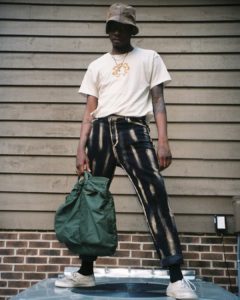
Mike’s design prowess has most recently taken shape through clothing. Now, Mike is studying Fashion Design at North Carolina Central, is a studio artist at the Eno Arts Mill, and is the founder and designer of Poor Dad, a sustainable clothing brand “dedicated to everyone without a seat at the table who’s done waiting.” Mike’s work in marketing, in presentation, in community—these skills of fashion design are those built in music production rearranged and regathered. “I think it’s because I like processes, and learning,” notes Mike. “All of those things just became like my gumbo. … I went through many roads and all of those things actually made me better.”
Poor Dad’s clothes are streamlined, clean lines and colors, crisp black and white contrast. The styles mirror and build on hip hop design legends like April Walker, Misa Hylton, and Roxanne Shanté. Esteemed French publication Black Square notes Poor Dad clothing as a brand for “les rêveurs et ceux qui veulent bousculer les codes tout en restant eux mêmes”—the dreamers, the movers, the ones true to themselves, ceux qui bousculent, Poor Dad.
The name of the company comes from a combination of Mike’s rebellion against “chasing money,” a play on the title of a get-rich-quick book he discovered on his father’s bookshelf, and a hope that the title “will mean a million things to a million people,” change in meaning over time, and thus open ideas of possibility. Just as the brand name invites critical thinking, this is a brand thoughtful of its positioning within the clothing industry and local community. Mike explains that while the idea for Poor Dad clothing began in 2016, moving towards the brand’s launch this year (on Father’s Day, appropriately) has taken time.
“A lot of this was me recognizing that we don’t need another t-shirt company, we don’t need more clothes. So if I’m going to do this, why am I doing it?” explains Mike. “So it took me a while to kind of understand and really dig through my mind, dig through my personal experiences, figure out a position that is real for me and that I think can also connect with other people.”
There’s an embracement of process in Mike’s work. Unlike many artists who closely guard their creation processes for fears of showing their cards or allowing the public glimpses of creativity’s messiness, Mike believes in allowing the community to watch the journey. “As this thing is unfolding, and I learn to express these messages better, in different ways, hopefully that people are then able to become more comfortable in themselves, more comfortable taking an adventure, becoming more uncomfortable with uncertainty, more comfortable with experimenting,” explains Mike. “So I’ll show that sometimes as I’m just in the studio working on an idea, and it’s just me mixing paints, or making my own paints from dyes, or whatever it is, just kind of balancing it out like that where’s it’s not just ‘hey, here’s this perfect collection.’Sometimes it’s cool to see this collection grow and see it took a year for it to come to light.”
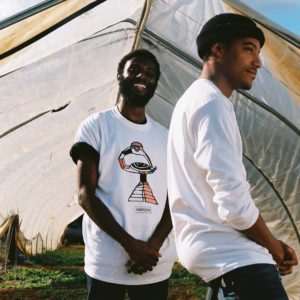
In vein with connecting people, Poor Dad actively engages with local and artistic community. On Instagram, Poor Dad hosts “Sunday Schools,” quick, catchy video introductions to acclaimed Black artists and leaders. In Orange County, Poor Dad has recently announced a design collaboration with Sankofa Farms. Mike explains that Poor Dad has “decided that we would like a certain amount of our proceeds to go towards these community initiatives where we’ll fund the whole project, just because we want to be able to collaborate with other people who are doing very good things for the community. It can just be a part of being a human, where 20% of my work is just dedicated to helping.”
Mike hopes his work can help to build artistic community particularly in North Carolina, to help artists see the area as one of artistic possibility and future. Many creatives move to cities like LA, Atlanta, and New York with the belief that these locations are the only locations with the cultural resources necessary for pursuing an artistic career. Mike hopes his commitment to working as an artist in the area and the transparency he aims to offer in his creative process can help others feel that “maybe there’s a hub here, maybe there’s places to tap in.” He explains that “I think there’s enough creative people, even in this area, they just don’t know each other. I would love to create a hub that connects these different worlds.”
Mike admits that “all of this, ultimately, if things work out as I wish they would, I would love to launch a school one day, that kind of connects a bunch of different things.” Laughing, he quickly adds “But I be dreaming, you know.” And maybe right now it is a dream, but still, in the aim of starting the process:
Three Pieces of Mike Tambashe Design Advice:
-
- “I’m trying to do a lot less getting influences from other people’s work necessarily and more from the people that I’m seeing around, the colors I’m seeing around, the textures I’m seeing around, whether it’s just looking at the patterns of the cracks on this road. Looking at those ideas, getting colors from nature, there’s textures literally all around us. I can piece together beautiful things just by also playing with these textures like that. And getting more influenced by that. I think it will give me a little bit more of my own language.”
- “It’s almost like letting the story come to me. The world around, I think is always trying to—these patterns are already here and they’re around us. And so it’s like by not necessarily trying to solve a design problem in this one instance but living with the problem, I think that’s how I find the creative way to solve the problem. Both by taking my problems into the world and seeing what other people’s perspectives about this are as well.
- “I think being present is so important, and that’s what it’s about. And I think that’s all we really have, you know, are these moments. Like on my death bed I’m not going to wish I could work one more hour. But I think I’ll be glad to live a life that had these moments, and they brought me joy, really.”
